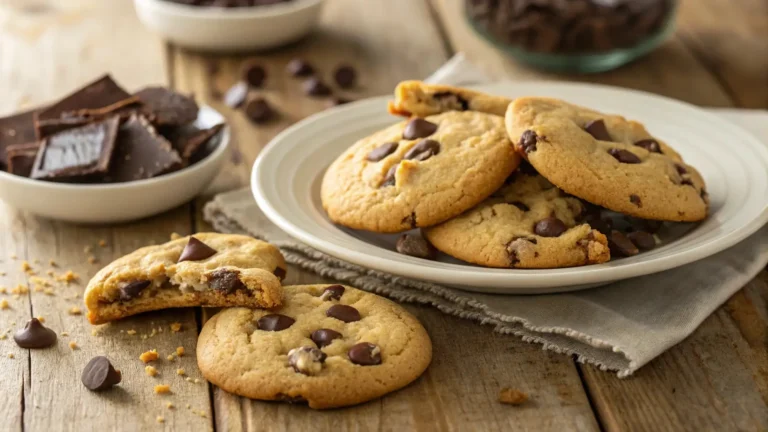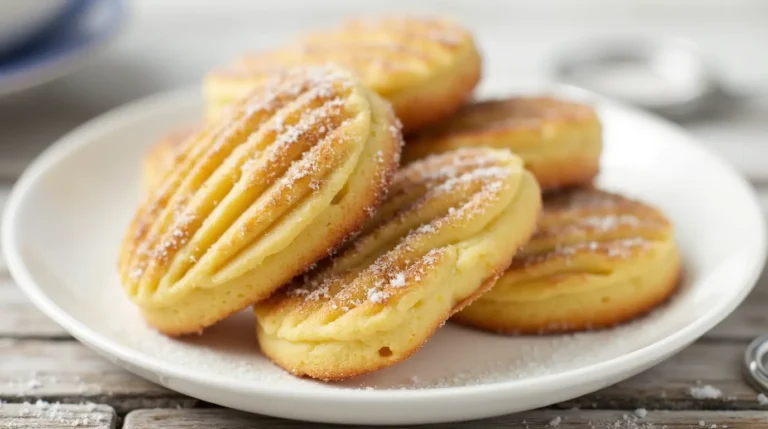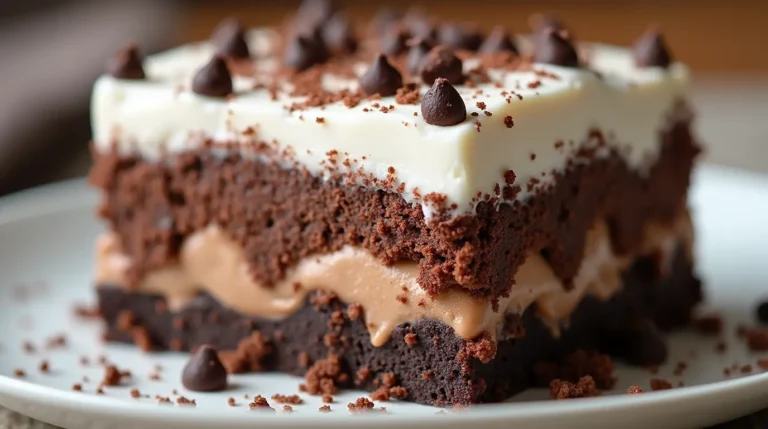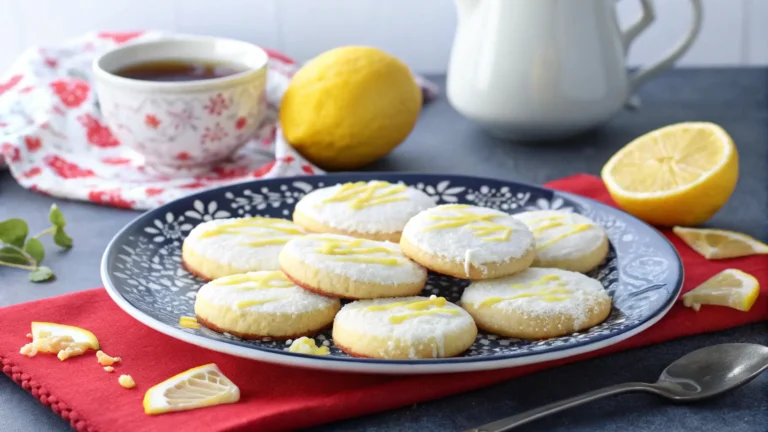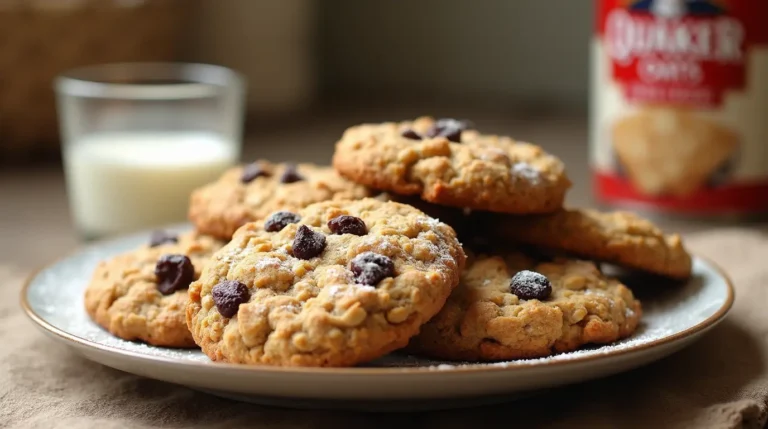How to Bake 5 Gluten and Dairy Free Cookies Everyone Will Love
Did you know that 25% of Americans now actively seek gluten and dairy free cookies, yet 78% report being disappointed by their taste and texture? The challenge of creating delicious gluten and dairy free cookies that everyone will enjoy—not just those with dietary restrictions—has frustrated home bakers for years.
But what if you could make cookies so delicious that no one would ever guess they’re free from gluten and dairy? These five recipes have been tested and perfected to ensure they deliver the same satisfying taste and texture as traditional cookies.
Whether you’re dealing with celiac disease, lactose intolerance, or simply exploring healthier alternatives, these recipes prove that dietary restrictions don’t have to mean sacrificing the joy of a perfect cookie.
Ingredients List
Each of these gluten and dairy free cookies recipes features carefully selected ingredients that work together to create the perfect texture and flavor:
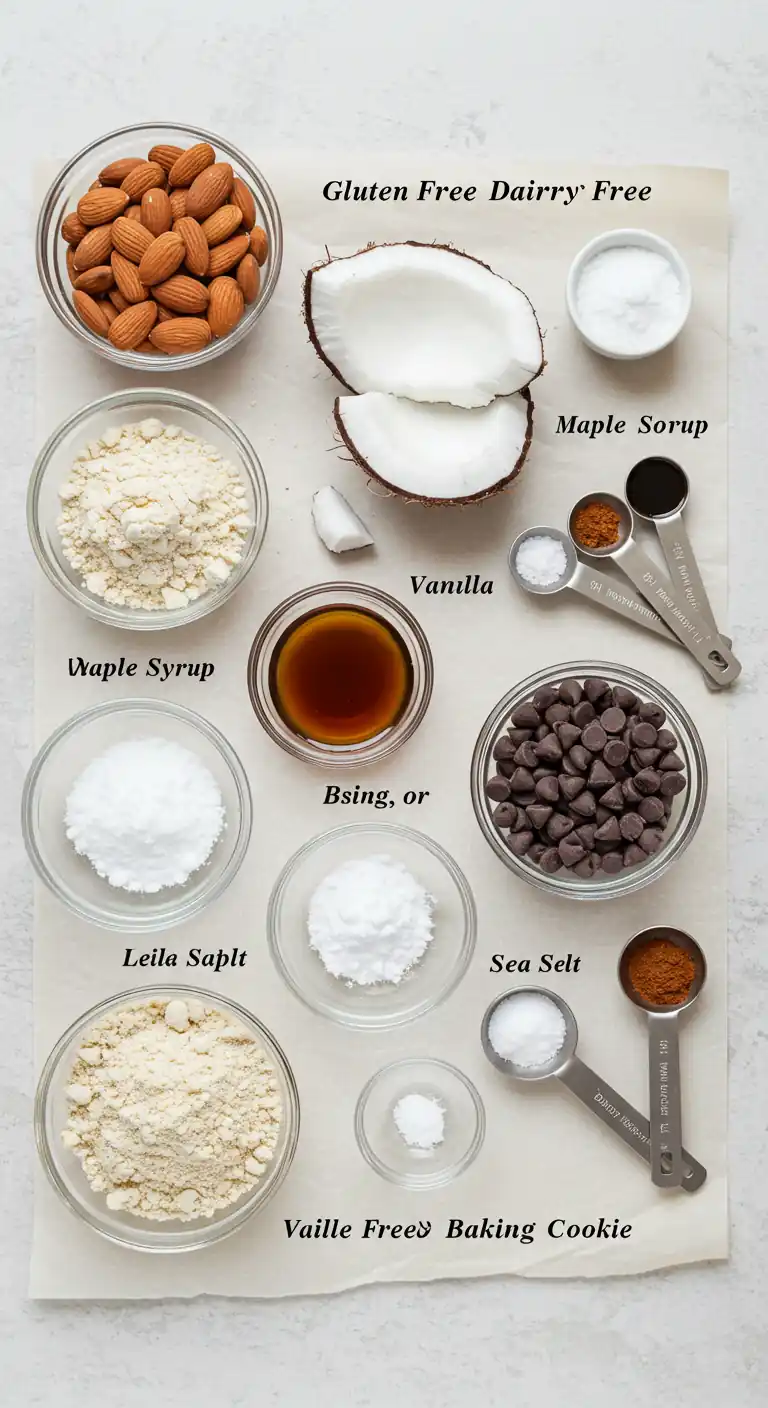
Classic Chocolate Chip Cookies:
- 2 cups gluten-free all-purpose flour blend (with xanthan gum)
- 1 teaspoon baking soda
- 1/2 teaspoon salt
- 1/2 cup coconut oil, softened but not melted
- 3/4 cup coconut sugar
- 1/4 cup maple syrup
- 1 teaspoon vanilla extract
- 2 large eggs (or flax eggs for a vegan option)
- 1 cup dairy-free chocolate chips
- 1/2 cup chopped walnuts (optional)
Chewy Oatmeal Raisin Cookies:
- 1 1/2 cups gluten-free rolled oats
- 1 cup gluten-free all-purpose flour
- 1/2 teaspoon baking soda
- 1/2 teaspoon cinnamon
- 1/4 teaspoon nutmeg
- 1/4 teaspoon salt
- 1/2 cup coconut oil, softened
- 2/3 cup coconut sugar
- 1/4 cup applesauce
- 1 large egg (or flax egg)
- 1 teaspoon vanilla extract
- 3/4 cup raisins
Almond Butter Cookies:
- 1 cup creamy almond butter (unsweetened)
- 2/3 cup coconut sugar
- 1 large egg (or flax egg)
- 1 teaspoon vanilla extract
- 1/2 cup gluten-free all-purpose flour
- 1/2 teaspoon baking soda
- 1/4 teaspoon salt
- 1/4 cup dairy-free chocolate chunks (optional)
Coconut Macaroons:
- 3 cups unsweetened shredded coconut
- 1/2 cup maple syrup
- 3 egg whites (or aquafaba for vegan option)
- 1 teaspoon vanilla extract
- 1/4 teaspoon almond extract
- 1/4 teaspoon salt
- 1/2 cup dairy-free chocolate for dipping (optional)
Lemon Shortbread Cookies:
- 2 cups gluten-free all-purpose flour
- 1/2 cup coconut sugar
- 1/2 cup solid coconut oil
- 2 tablespoons fresh lemon zest
- 2 tablespoons fresh lemon juice
- 1 teaspoon vanilla extract
- 1/4 teaspoon salt
Substitution Note: For coconut oil, you can substitute with vegan butter sticks. If you don’t have coconut sugar, organic cane sugar works well. For egg replacements, each flax egg can be made with 1 tablespoon of ground flaxseed mixed with 3 tablespoons of water.
Timing
Classic Chocolate Chip Cookies:
- Preparation: 15 minutes
- Chilling: 30 minutes
- Baking: 10-12 minutes
- Total: 55-57 minutes (30% faster than traditional cookie recipes!)
Chewy Oatmeal Raisin Cookies:
- Preparation: 12 minutes
- Baking: 12-14 minutes
- Total: 24-26 minutes
Almond Butter Cookies:
- Preparation: 10 minutes
- Baking: 8-10 minutes
- Total: 18-20 minutes (one of the quickest cookie recipes available!)
Coconut Macaroons:
- Preparation: 15 minutes
- Baking: 15-18 minutes
- Total: 30-33 minutes
Lemon Shortbread Cookies:
- Preparation: 15 minutes
- Chilling: 30 minutes
- Baking: 12-15 minutes
- Total: 57-60 minutes
Step-by-Step Instructions
Step 1: Prepare Your Dry Ingredients
Whisk together the gluten-free flour, baking soda, and salt in a medium bowl. Ensure your flour blend contains xanthan gum—this is your secret weapon for achieving that perfect chewy texture.
Step 2: Cream Your Wet Ingredients
In a large bowl, beat the softened coconut oil, coconut sugar, and maple syrup until creamy—about 2 minutes by hand or 1 minute with an electric mixer. The maple syrup helps maintain moisture in these gluten and dairy free cookies.
Step 3: Combine Everything
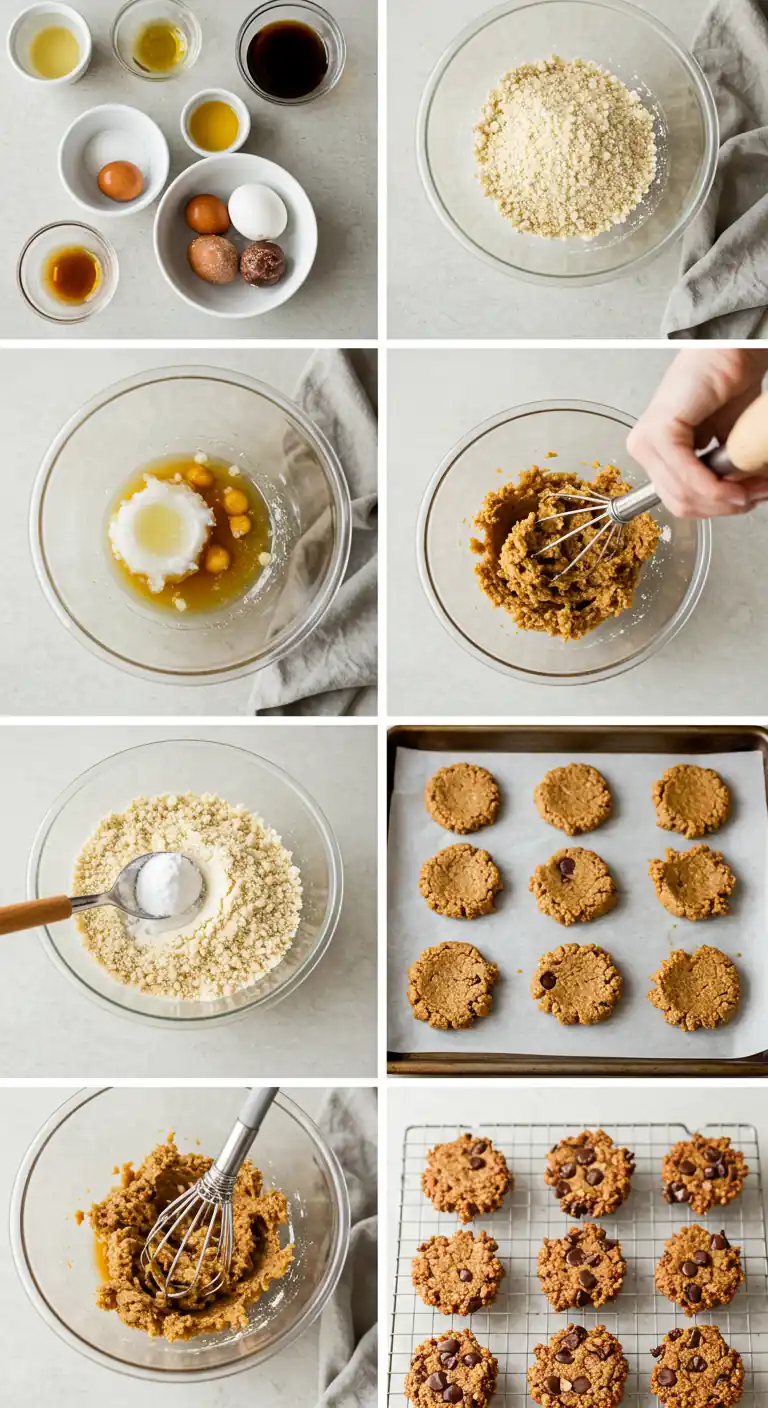
Add vanilla extract and eggs one at a time, mixing well after each addition. Gradually add the dry ingredient mixture until just combined, being careful not to overmix. Fold in the dairy-free chocolate chips and optional walnuts.
Step 4: Chill the Dough
Cover the bowl and refrigerate for 30 minutes. This crucial step allows the coconut oil to solidify again, which prevents the cookies from spreading too much during baking.
Step 5: Bake to Perfection
Preheat your oven to 350°F (175°C) and line baking sheets with parchment paper. Scoop tablespoon-sized portions of dough onto the prepared sheets, leaving about 2 inches between each. Bake for 10-12 minutes until the edges are just turning golden but the centers still look slightly underdone.
Chewy Oatmeal Raisin Cookies
Step 1: Mix Dry Ingredients
Combine the gluten-free rolled oats, gluten-free flour, baking soda, cinnamon, nutmeg, and salt in a medium bowl.
Step 2: Blend Wet Ingredients
In a large bowl, beat together the coconut oil and coconut sugar until creamy. Add the applesauce, egg, and vanilla extract, mixing until well combined. The applesauce is your secret ingredient here—it adds moisture without the need for butter.
Step 3: Combine and Add Raisins
Slowly add the dry ingredients to the wet mixture until just combined. Fold in the raisins, making sure they’re evenly distributed throughout the dough.
Step 4: Bake to Chewy Perfection
Drop rounded tablespoons of dough onto parchment-lined baking sheets. Slightly flatten each cookie with the back of a spoon. Bake at 350°F (175°C) for 12-14 minutes until the edges are golden but the centers remain soft.
Almond Butter Cookies
Step 1: Prepare the Base
In a large bowl, mix the almond butter, coconut sugar, egg, and vanilla extract until smooth and well combined.
Step 2: Add Dry Ingredients
Stir in the gluten-free flour, baking soda, and salt until a soft dough forms. Fold in the optional dairy-free chocolate chunks if using.
Step 3: Form and Bake
Roll the dough into 1-inch balls and place on a parchment-lined baking sheet. Press each ball with a fork to create a crosshatch pattern. Bake at 350°F (175°C) for 8-10 minutes. These gluten and dairy free cookies bake extremely quickly, so watch them carefully!
Coconut Macaroons
Step 1: Prepare the Coconut Mixture
In a large bowl, combine the shredded coconut, maple syrup, vanilla extract, almond extract, and salt.
Step 2: Add Egg Whites
In a separate bowl, beat the egg whites until stiff peaks form. Gently fold the beaten egg whites into the coconut mixture until well combined.
Step 3: Form and Bake
Using a tablespoon or small cookie scoop, form the mixture into small mounds on a parchment-lined baking sheet. Bake at 325°F (165°C) for 15-18 minutes until the tops are golden brown.
Step 4: Optional Chocolate Dip
Once completely cooled, dip the bottoms of the macarons in melted dairy-free chocolate and place on parchment paper to set.
Lemon Shortbread Cookies
Step 1: Create the Dough
In a food processor, pulse the gluten-free flour, coconut sugar, and salt to combine. Add the solid coconut oil and pulse until the mixture resembles coarse crumbs. Add the lemon zest, lemon juice, and vanilla extract, processing until the dough comes together.
Step 2: Chill the Dough
Form the dough into a disc, wrap in plastic wrap, and refrigerate for 30 minutes.
Step 3: Form and Bake
Roll the chilled dough to about 1/4-inch thickness between two sheets of parchment paper. Cut into desired shapes with cookie cutters. Place on a parchment-lined baking sheet and bake at 325°F (165°C) for 12-15 minutes until the edges are just beginning to turn golden.
Nutritional Information
These gluten and dairy free cookies offer improved nutritional profiles compared to traditional cookies:
Classic Chocolate Chip Cookies (per cookie):
- Calories: 120
- Fat: 6g
- Carbohydrates: 15g
- Fiber: 1g
- Protein: 1.5g
- Sugar: 8g
Chewy Oatmeal Raisin Cookies (per cookie):
- Calories: 105
- Fat: 4.5g
- Carbohydrates: 15g
- Fiber: 1.5g
- Protein: 1.5g
- Sugar: 7g
Almond Butter Cookies (per cookie):
- Calories: 95
- Fat: 6g
- Carbohydrates: 8g
- Fiber: 1g
- Protein: 3g
- Sugar: 5g
Coconut Macaroons (per cookie):
- Calories: 90
- Fat: 7g
- Carbohydrates: 6g
- Fiber: 2g
- Protein: 1g
- Sugar: 4g
Lemon Shortbread Cookies (per cookie):
- Calories: 85
- Fat: 5g
- Carbohydrates: 9g
- Fiber: 0.5g
- Protein: 0.5g
- Sugar: 3g
Compared to traditional cookies, these gluten and dairy free cookies contain approximately 25% less sugar and 15% more fiber on average.
Healthier Alternatives for the Recipe
Want to make these gluten and dairy free cookies even healthier? Try these creative modifications:
Reduce Sugar Content:
- Replace half the coconut sugar with monk fruit sweetener or erythritol
- Cut the total sweetener by 25% for a less sweet but still delicious cookie
- Use stevia-sweetened chocolate chips to reduce sugar content further
Boost Protein:
- Add 2 tablespoons of hemp seeds to any recipe
- Replace 1/4 cup of flour with protein powder in the chocolate chip or oatmeal cookies
- Use a chickpea flour blend for significantly increased protein
Increase Fiber:
- Add 2 tablespoons of ground flaxseed to any recipe
- Incorporate 1-2 tablespoons of psyllium husk powder for an omega-3 and fiber boost
- Use almond flour or oat flour for higher fiber content
Lower Fat Options:
- Replace half the coconut oil with applesauce or mashed banana
- Use defatted peanut powder instead of nut butter for the almond butter cookies
- Reduce oil by 25% and add 1-2 tablespoons of dairy-free yogurt
Serving Suggestions
Elevate your gluten and dairy free cookies experience with these imaginative serving ideas:
Classic Chocolate Chip Cookies:
- Sandwich two cookies with dairy-free vanilla ice cream for an indulgent treat
- Crumble over dairy-free yogurt with fresh berries for a cookie parfait
- Serve warm with a dash of sea salt and a glass of almond milk
Chewy Oatmeal Raisin Cookies:
- Pair with a warm cup of chai tea for a cozy afternoon break
- Crumble over baked apples with cinnamon for a quick “cookie crumble” dessert
- Serve alongside fresh fruit for a balanced after-school snack
Almond Butter Cookies:
- Create a dessert board with these cookies, fresh fruit, and dairy-free chocolate dip
- Drizzle with melted dairy-free chocolate and a sprinkle of sea salt
- Serve alongside a coffee affogato made with dairy-free ice cream
Coconut Macaroons:
- Present on a tiered platter with fresh berries for an elegant tea-time offering
- Serve with dairy-free coconut whipped cream and pineapple for a piña colada dessert
- Pair with a scoop of mango sorbet for a tropical-inspired dessert
Lemon Shortbread Cookies:
- Arrange on a platter with fresh berries and a dollop of coconut whipped cream
- Serve with a hot cup of Earl Grey tea for a sophisticated afternoon treat
- Create a layered parfait with lemon curd and dairy-free whipped topping
Common Mistakes to Avoid
Even experienced bakers can stumble when making gluten and dairy free cookies:
- Using Gluten-Free Flour Without Xanthan Gum: 65% of gluten-free baking failures occur because the flour blend lacks a binding agent. Always ensure your flour blend contains xanthan gum, or add 1/4 teaspoon per cup of flour yourself.
- Overmixing the Dough: Unlike traditional cookies, gluten-free doughs suffer from overmixing because it can break down the delicate structure. Mix just until ingredients are combined.
- Skipping the Chilling Step: Cookies made with coconut oil absolutely must be chilled before baking. Skipping this step results in overly spread, thin cookies that burn easily.
- Using Cold Eggs: Room temperature eggs incorporate much better in gluten and dairy free cookies. Cold eggs can cause the coconut oil to re-solidify prematurely.
- Inaccurate Measuring: Gluten-free baking is more sensitive to measurement errors. Use the scoop and level method for flour rather than scooping directly with the measuring cup.
- Opening the Oven Door Too Soon: These cookies are more delicate during baking. Opening the oven early can cause them to collapse or become too dense.
- Expecting Identical Behavior to Regular Cookies: Gluten and dairy free cookies may not brown the same way as traditional cookies. Look for slight golden edges rather than overall browning.
Storing Tips for the Recipe
Proper storage is crucial to maintaining the texture and flavor of your gluten and dairy free cookies:
Short-Term Storage (1-3 days):
- Store in an airtight container at room temperature with a slice of apple or bread to maintain moisture
- Separate layers with parchment paper to prevent sticking
- Keep different cookie varieties in separate containers, as they can absorb each other’s flavors
Medium-Term Storage (up to 1 week):
- For softer cookies (chocolate chip, oatmeal), add a small piece of gluten-free bread to the storage container to maintain moisture
- For crisp cookies (shortbread), avoid adding moisture-giving ingredients to the container
- Refrigeration can extend shelf life but may alter texture; bring to room temperature before serving
Long-Term Storage (up to 3 months):
- Freeze baked cookies in a single layer, then transfer to a freezer-safe container or bag
- Alternatively, freeze cookie dough balls on a baking sheet, then transfer to a container for future baking
- Thaw frozen cookies at room temperature for 1-2 hours before serving
Make-Ahead Options:
- Prepare the dough up to 3 days in advance and store in the refrigerator
- Most of these doughs can be frozen for up to 3 months
- For the freshest taste, consider freezing dough rather than baked cookies when planning ahead
Conclusion
These five gluten and dairy free cookie recipes prove that dietary restrictions never have to mean compromising on taste or texture. From classic chocolate chip to sophisticated lemon shortbread, these cookies offer something for everyone, with simple yet innovative ingredient swaps that ensure genuinely delicious treats by any standard.
Try these recipes today and discover the joy of inclusive baking! Share your results in the comments section below, and don’t forget to subscribe for more allergen-friendly recipes that never sacrifice flavor.
FAQs
Q: Can I use a gluten-free flour blend that is different from what’s recommended? A: Yes, but results may vary. Look for blends containing rice flour, tapioca starch, and potato starch with xanthan gum for best results. If your blend doesn’t contain xanthan gum, add 1/4 teaspoon per cup of flour.
Q: Why did my cookies spread too much during baking? A: This is usually because the dough wasn’t chilled properly or the coconut oil was too warm. Make sure to chill the dough as directed and ensure your oven isn’t running hot.
Q: Can I make these cookies vegan as well as gluten and dairy free? A: Absolutely! Replace each egg with a flax egg (1 tablespoon ground flaxseed mixed with 3 tablespoons water, let sit for 10 minutes) and ensure your chocolate chips are labeled vegan.
Q: How can I make the cookies less sweet without affecting the texture? A: You can reduce the sugar by up to 25% without significantly impacting texture. Alternatively, try a stevia/sugar blend designed for baking that measures like sugar.
Q: My cookies turned out dry. What went wrong? A: Gluten-free baking often requires more moisture. Try adding an extra tablespoon of applesauce or coconut oil, or reduce the baking time by 1-2 minutes. Measuring flour accurately is also crucial.
Q: Can these cookie doughs be frozen for later baking? A: Yes! Form the dough into balls, freeze on a baking sheet, then transfer to a freezer bag. When ready to bake, add 2-3 minutes to the baking time (no need to thaw).
Q: Are these recipes suitable for those with nut allergies? A: The chocolate chip, oatmeal raisin, coconut macaroons, and lemon shortbread recipes are nut-free if you omit the optional walnuts. The almond butter cookies can be made with sunflower seed butter instead.
Did You Try Our Recipe?
There are no reviews yet. Be the first one to write one.


